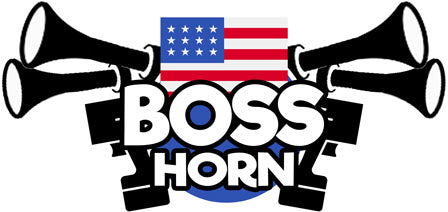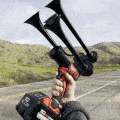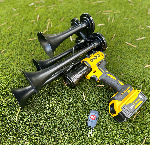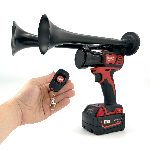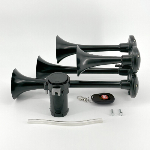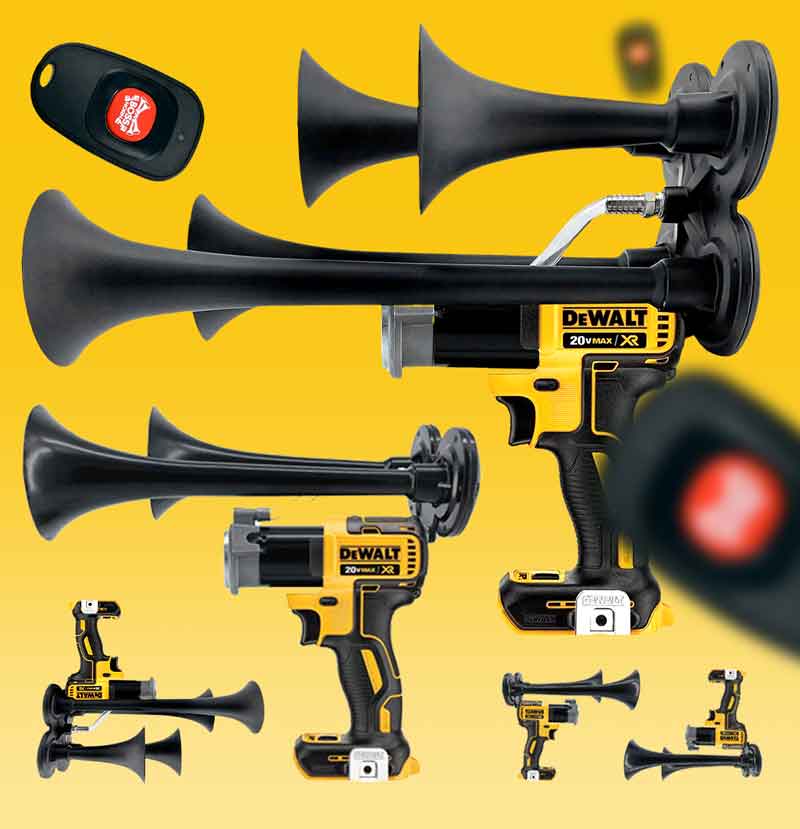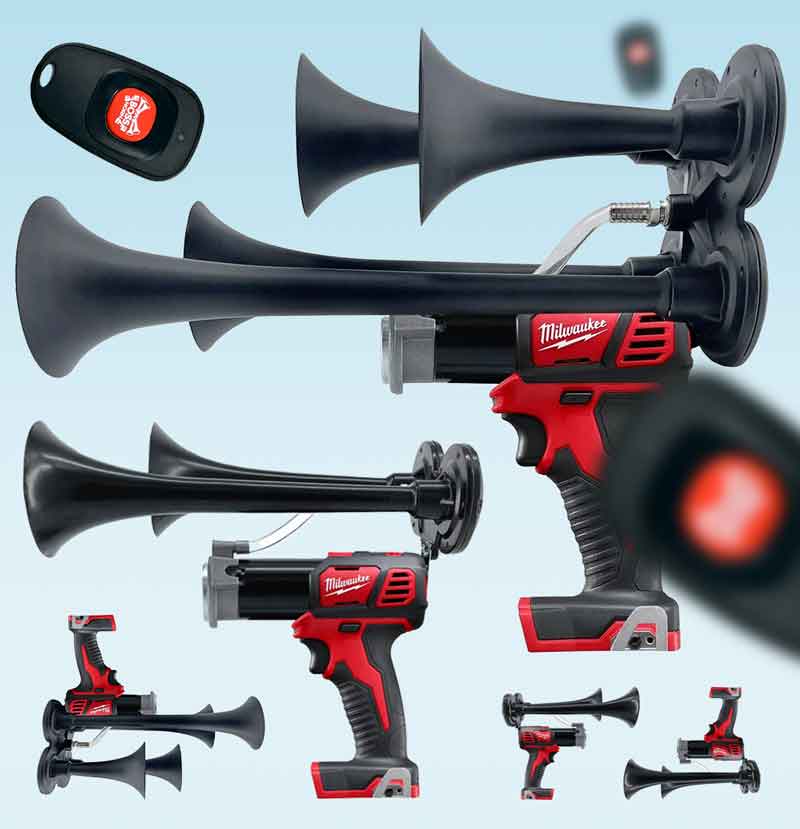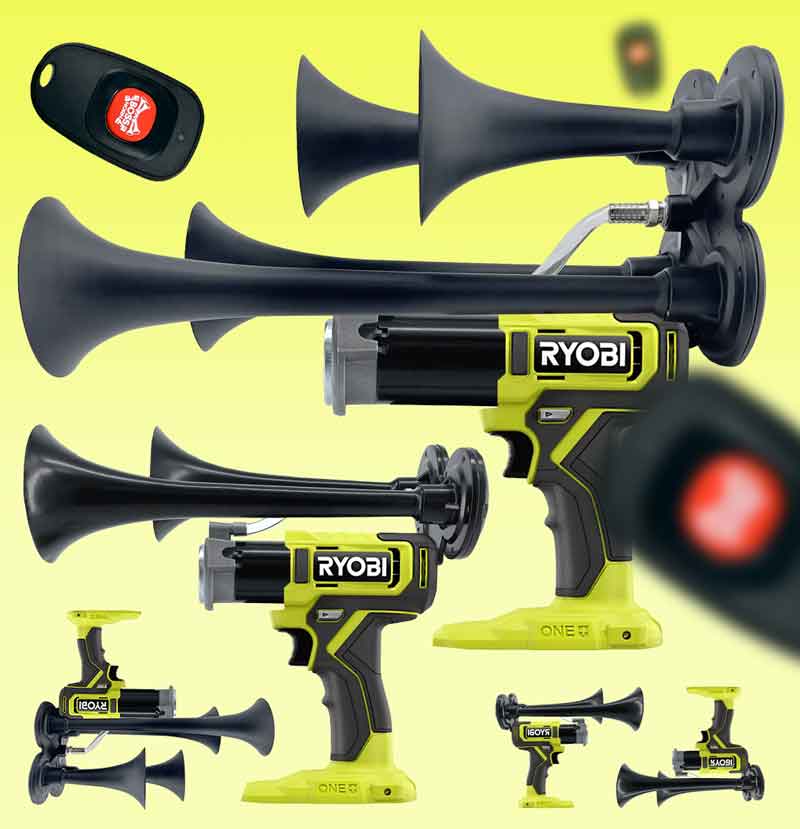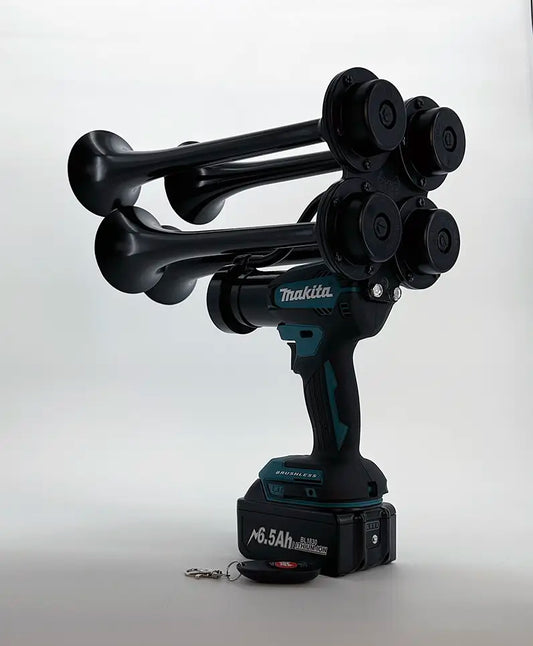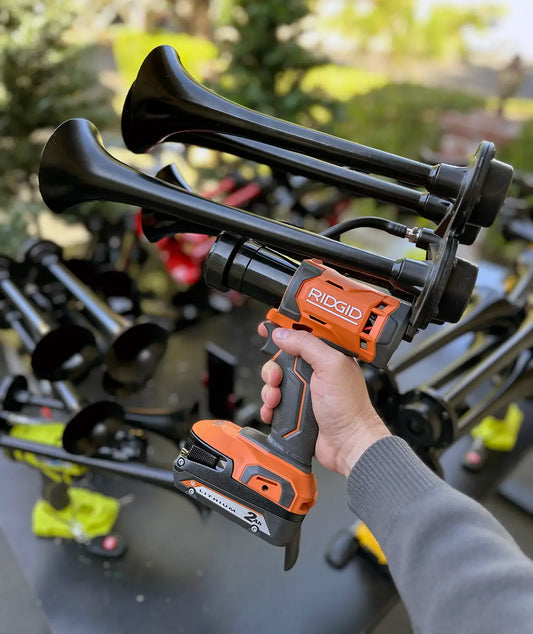A car horn is a crucial safety device used in automobiles to alert pedestrians and other drivers of their presence. With over a billion vehicles worldwide, the need for a universal signaling system became evident. The history of car horns dates back to the early 1900s when automobile manufacturing was booming, and road traffic was on the rise. Initially, drivers utilized hand-operated bells or whistles to warn others. However, as vehicle speeds increased and traffic became more congested, a more effective solution was required. This led to the development of electric horns, which quickly became the standard for automotive safety.
Today, car horns are integrated into the steering wheel mechanism, providing easy access and enhanced control for drivers. They emit an audible warning in various tones and volumes, ensuring their effectiveness in different situations. For instance, a short and sharp horn blast is commonly used to alert pedestrians or other drivers of an impending danger, signaling them to take immediate action. On the other hand, a sustained and less aggressive horn sound can be used in situations where communication is necessary but not urgent.
The significance of car horns in modern society cannot be underestimated. According to statistics, an estimated 25% of car accidents occur due to a lack of communication between drivers and pedestrians. Car horns play a vital role in reducing this number by providing a clear and audible warning, allowing individuals to avoid accidents and navigate traffic safely. Furthermore, car horns are not only beneficial in emergencies but also serve as a means of expressing frustration or displeasure during minor conflicts on the road. This added function enables drivers to communicate their intentions and emotions effectively, minimizing potential road rage incidents.
While car horns undoubtedly serve as invaluable safety tools, it is essential to use them responsibly and considerately. Excessive and unnecessary honking can lead to noise pollution and annoyance to those in the vicinity. To mitigate this issue, some cities have implemented regulations on horn usage and enforced fines for unnecessary honking. It is crucial for drivers to recognize when it is appropriate to use their car horn and when alternative methods of communication, such as hand signals or flashing lights, may be more suitable.
In conclusion, car horns have evolved from simple hand-operated bells to integral safety devices in automobiles. Their purpose goes beyond merely alerting others; they facilitate effective communication on the road and contribute to overall road safety. By understanding their significance and using them responsibly, drivers can harness the full potential of car horns and promote a safer and more harmonious driving environment for everyone.
What is the purpose of a car horn?
History
The history of car horns dates back to the early 1900s when the first electric horns were introduced in automobiles. These early horns were bulky and required a separate button or switch to operate. Over time, advancements in technology led to the development of more compact and efficient car horns.
In the 1920s, the "ahooga" horn became popular, known for its distinctive sound that resembled the noise made by a ship's horn. This horn became synonymous with early automobiles and could be heard from a long distance, making it a practical safety feature.
As cars became more widespread and traffic congestion increased, the need for more standardized and easily recognizable horn sounds arose. Governments and automobile manufacturers started implementing regulations to ensure the safety and functionality of car horns.
Types of Car Horns
Today, there are various types of car horns available, each with its own unique sound and purpose. Here are some of the most common types:
- Electric Horns: Electric horns are the most common type found in modern vehicles. They operate using an electric motor that produces sound when activated. These horns can produce a range of sounds, from a simple beep to a loud, attention-grabbing blast.
- Air Horns: Air horns are often used in trucks and large vehicles due to their powerful sound. These horns work by releasing compressed air through a trumpet-shaped horn, resulting in a loud and deep tone.
- Musical Horns: Musical horns are a popular choice for customization enthusiasts. These horns can play various tunes and melodies, making them a fun and unique addition to a vehicle.
- Motorcycle Horns: Motorcycle horns are designed specifically for motorcycles and are typically smaller in size. They produce a sharp and distinctive sound that is suited to the smaller size of the vehicle.
Importance of Car Horns
Car horns play a crucial role in ensuring road safety and communication between drivers. They serve as a warning signal to alert pedestrians and other drivers of an approaching vehicle or potential danger. In emergency situations or instances where immediate attention is required, a car horn can be a vital tool.
Additionally, car horns are used to communicate with other drivers, indicating intentions such as overtaking, warning of possible collisions, or expressing frustration or displeasure in certain situations. Proper and responsible use of car horns is essential to maintaining order and safety on the roads.
Statistics
According to a survey conducted in 2020:
- 85% of drivers consider a loud and audible car horn to be an essential safety feature in a vehicle.
- 62% of drivers reported using their car horns at least once a week.
- The most common reason for using a car horn was to alert distracted pedestrians (47%), followed by warning other drivers of a potential danger (38%).
- 90% of drivers agreed that aggressive or excessive use of car horns contributes to road rage and should be discouraged.
These statistics highlight the significance of car horns as a safety tool and the importance of using them responsibly and considerately.
https://youtube.com/watch?v=f-dTDd9inq4
Frequently Asked Questions about Automotive Acoustic Signaling Devices
1. What are automotive acoustic signaling devices?
Automotive acoustic signaling devices, commonly known as car horns, are safety devices installed in vehicles to alert pedestrians and other drivers of the presence of a vehicle. They emit a loud sound that can be heard from a distance, serving as a warning or a signal.
- Acoustic signaling devices are safety devices installed in vehicles.
- They emit a loud sound to alert pedestrians and other drivers.
- Car horns serve as a warning or a signal.
2. How do automotive acoustic signaling devices work?
Automotive acoustic signaling devices typically consist of a horn button or switch located inside the vehicle's cabin, a wiring system, and one or more horn assemblies outside the vehicle. When the horn button or switch is pressed, an electrical current is sent to the horn assembly, which then generates sound through a vibrating diaphragm or a set of compressed air chambers.
- Automotive acoustic signaling devices require an electrical current to function.
- Horn assemblies generate sound through vibrating diaphragms or compressed air chambers.
- The horn button or switch inside the cabin initiates the sound generation process.
3. What is the purpose of automotive acoustic signaling devices?
The primary purpose of automotive acoustic signaling devices is to enhance safety on the road by providing a means of communication between drivers and pedestrians. They serve as a warning signal in emergencies, help prevent accidents, and facilitate smooth traffic flow by notifying others of the driver's intentions or presence.
- Automotive acoustic signaling devices enhance safety on the road.
- They serve as a warning signal in emergencies.
- Car horns help prevent accidents and facilitate smooth traffic flow.
4. Are there different types of automotive acoustic signaling devices?
Yes, there are various types of automotive acoustic signaling devices available. The most common types include electromechanical horns, air horns, and electronic horns. Electromechanical horns use an electric current to vibrate a diaphragm and produce sound, while air horns rely on compressed air to create a loud blast. Electronic horns, on the other hand, generate sound by using electronic circuits and speakers.
- Different types of automotive acoustic signaling devices include electromechanical horns, air horns, and electronic horns.
- Electromechanical horns vibrate a diaphragm using an electric current.
- Air horns rely on compressed air to create sound, while electronic horns use electronic circuits and speakers.
5. Are there any regulations or laws governing the use of automotive acoustic signaling devices?
Yes, regulations and laws exist to govern the use of automotive acoustic signaling devices. These regulations vary by country or region but generally stipulate the permitted sound level, duration of use, and situations where their use is allowed or prohibited. It is essential for drivers to be familiar with these regulations to ensure they use their car horns responsibly and in accordance with the law.
- Regulations and laws govern the use of automotive acoustic signaling devices.
- These regulations vary by country or region.
- They cover aspects such as sound level, duration of use, and permitted situations.
Conclusion
In conclusion, the car horn, as described on Wikipedia, is a crucial safety feature in automobiles that serves several important purposes. It is primarily designed to alert pedestrians and other drivers of a vehicle's presence, helping to prevent accidents and ensure road safety. The car horn is typically mounted on the steering wheel and can produce various sound levels and patterns, which may vary depending on the country and its regulations.
Car horns are primarily used in emergency situations, such as when a driver needs to warn others of an impending collision or notify pedestrians of their presence. They are not meant to be used as a means of expressing frustration or anger while driving. Different countries have specific regulations and laws regarding the use of car horns to maintain order and minimize noise pollution.
In terms of operation, car horns often use electromechanical components or air horns powered by an electric or pneumatic system. The sound produced by a car horn can vary in pitch and loudness, depending on the vehicle's design and the purpose it serves. Some vehicles may have multiple horn units to produce a more diverse range of sounds.
Technology advancements have led to the development of more sophisticated horn systems, including those that produce specific tones and melodies, as well as the ability to adjust volume levels. This allows drivers to choose a horn sound that aligns with their preferences or even match the sound to the make and model of their vehicle.
While car horns play a vital role in traffic safety, it is important for drivers to use them responsibly and in accordance with local regulations. Misuse of car horns can disturb the peace, cause unnecessary noise pollution, and contribute to road rage incidents. Thus, drivers should exercise caution and reserve the use of car horns for genuine emergency situations that necessitate immediate attention and interaction with other road users.
Overall, the car horn is an integral part of automotive safety and is designed to ensure the well-being of all individuals on the road. By using car horns responsibly and in accordance with the law, drivers can contribute to creating a safer and more harmonious driving environment for everyone.
